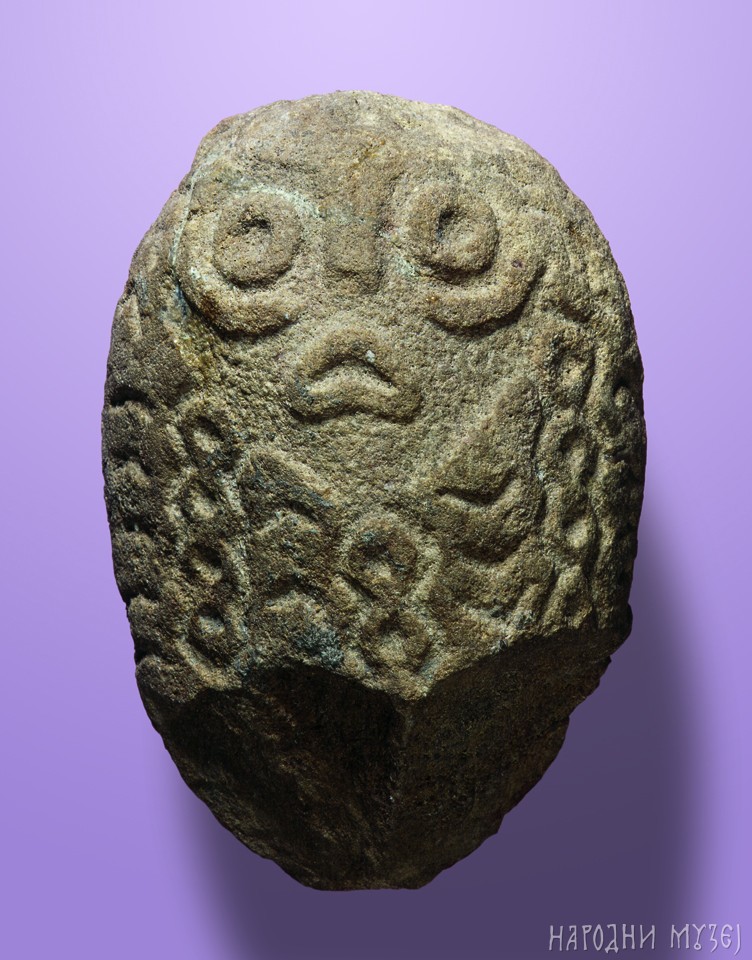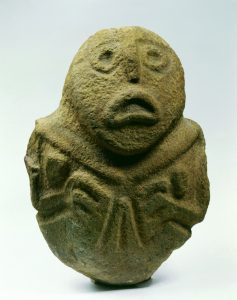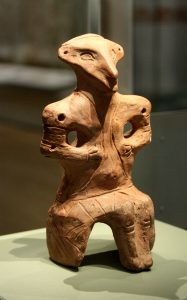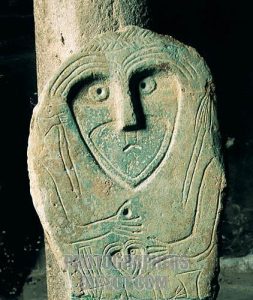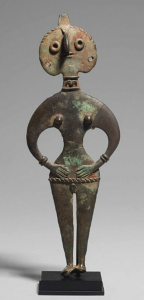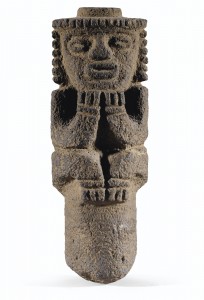The artefacts are on the National Museum in Belgrade. The text on their website reads:
In the Lepenski Vir collection are kept artifacts from the archaeological site of the same name. The objects date from 10th to 6th millennia BC, or, more specific, from Mesolithic (Lepenski vir I and Lepenski vir II) and Neolithic (Lepenski vir III) period.
Lepenski vir was discovered during the protective archaeological excavations within the scope of Djerdap I project, in the late 1960s and at the beginning of 1970s. Exceptional quality of the finds from Lepenski vir determined the foundation of this special collection.
The artefacts were found in a settlement, with deliberately constructed structure – with planned houses and sanctuaries, situated on the right bank of the river Danube, near the village Boljetin. Fishing was a very important aspect of the economy. Burials at the site indicates developed funerary rituals, as well as certain after life belief system.
The collection consists of bone, horn and antler objects – needles, fishhooks, spatulas, and jewellery made of bones and shells, and artefacts made of chipped stone. The most prominent objects from Lepenski vir are unique monumental sculptures made of stone, with fish-like human faces, expressing strong connection of the Lepenski vir population with the Danube River.
From Neolithic period of settlement the collection has pottery, artefacts made of polished stone, altars, figurines and amulets.
Curator: Bojana Mihailović, Senior curator
On is of course tempted to provide examples of other big-eyed hands in front objects from around the world:
Source: narodnimuzej.rs

